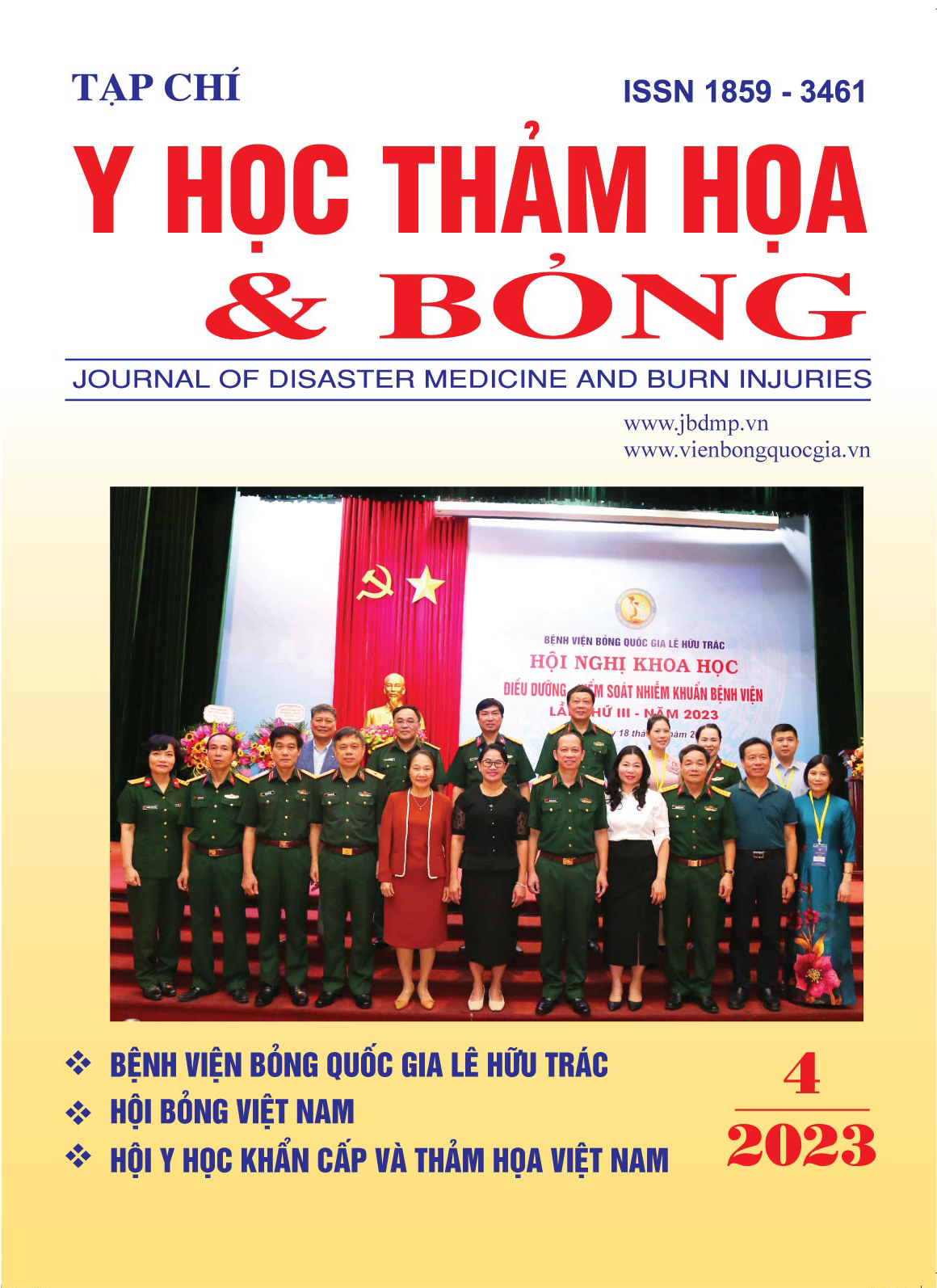Status of emergency equipments in ambulances in pre-hospital emergency
Main Article Content
Abstract
Objective: Surveying the current status of emergency equipment in ambulances in pre-hospital emergency response.
Subjects and methods: A descriptive study of the operation, usage, and response characteristics of ambulances according to standards in Circular 27/2017/TT-BYT and characteristics of medical equipment on ambulances according to Decision No. 3385/QD-BYT on 105 ambulances currently at 115 emergency centers in 6 provinces, Hanoi, Ho Chi Minh City, Da Nang, Ha Nam, Quang Nam, and Tien Giang.
Results: The majority of ambulances were in good condition, accounting for 83.8%, achieving quality inspection issued by the Department of Transport (95.2%) and obtaining an emergency transport license by the Department of Health (80.0%). There were 75.2% of ambulances that meet the standards according to Circular 27/2017/TT-BYT of the Ministry of Health, of which 89.5% meet the standards on the outside of the vehicle, 83.8% meet the standards on the inside of the vehicle and 81.0% met standards for other specialized equipment. There were 60.0% of ambulances fully equipped with 5 groups of essential equipment for pre-hospital emergency care, the most complete was ventilation respiratory support equipment, and 6.7% of ambulances had all 8 fully equipped groups according to regulations (6.7%), a high completeness rate was all kinds of respiratory support tools, bandages, gauze of all kinds, blood pressure measuring tools, stethoscopes, thermometer.
Conclusion: The percentage of ambulances still in good use was relatively high, however, the medical equipment and instruments in ambulances were largely inadequate according to prescribed standards.
Article Details
Keywords
Pre-hospital emergency, ambulance, medical equipment
References
2. Veena M. Sriram, Gopalkrishna Gururaj, Junaid A. Razzak, et al. (2016). Comparative analysis of three pre-hospital emergency medical services organizations in India and Pakistan. Public Health, 137: 169–175.
3. Deepak Bhandari, Nabin Krishna Yadav (2020). Developing an integrated emergency medical services in a low-income country like Nepal: a concept paper. International Journal of Emergency Medicine, 13(7): 1-5.
4. Bộ Y tế (2017). Thông tư số 27/2017/TT-BYT, ngày 28/6/2017 về Quy định tiêu chuẩn và sử dụng xe ô tô cứu thương.
5. Bộ Y tế (2012). Quyết định số 3385/QĐ-BYT về Ban hành Danh mục Vali thuốc cấp cứu, dụng cụ cấp cứu, thuốc thiết yếu và trang thiết bị thiết yếu trang bị cho một kip cấp cứu ngoại viện trên xe ô tô cứu thương.
6. Nguyễn Thị Minh Hiếu, Trịnh Ngọc Thành, Nguyễn Thái Học và cộng sự (2020). Thực trạng xe cứu thương, thuốc và trang thiết bị y tế phục vụ hoạt động cấp cứu trước viện tại Việt Nam. Tạp chí Chính sách Y tế, 29: 93-105.


